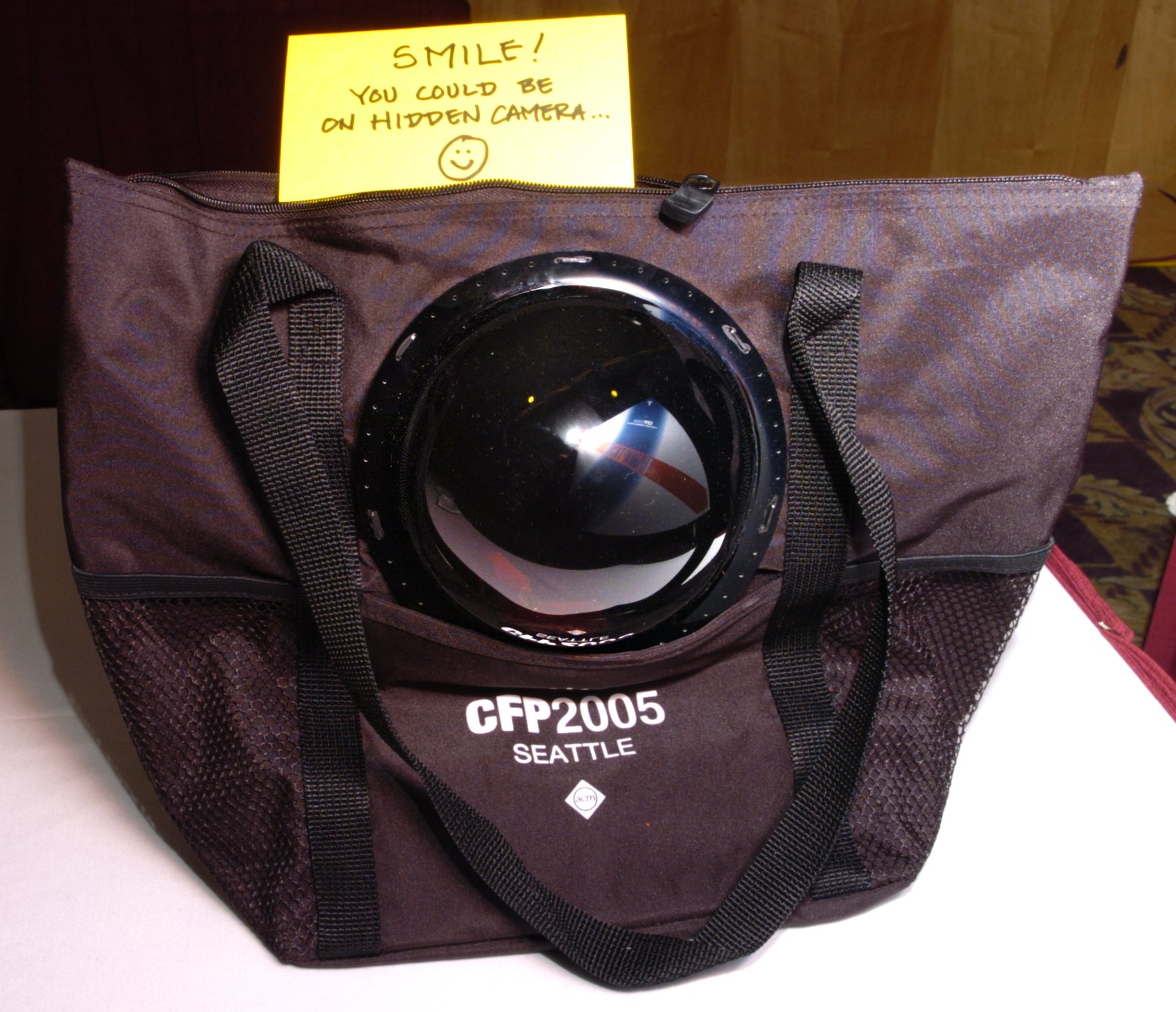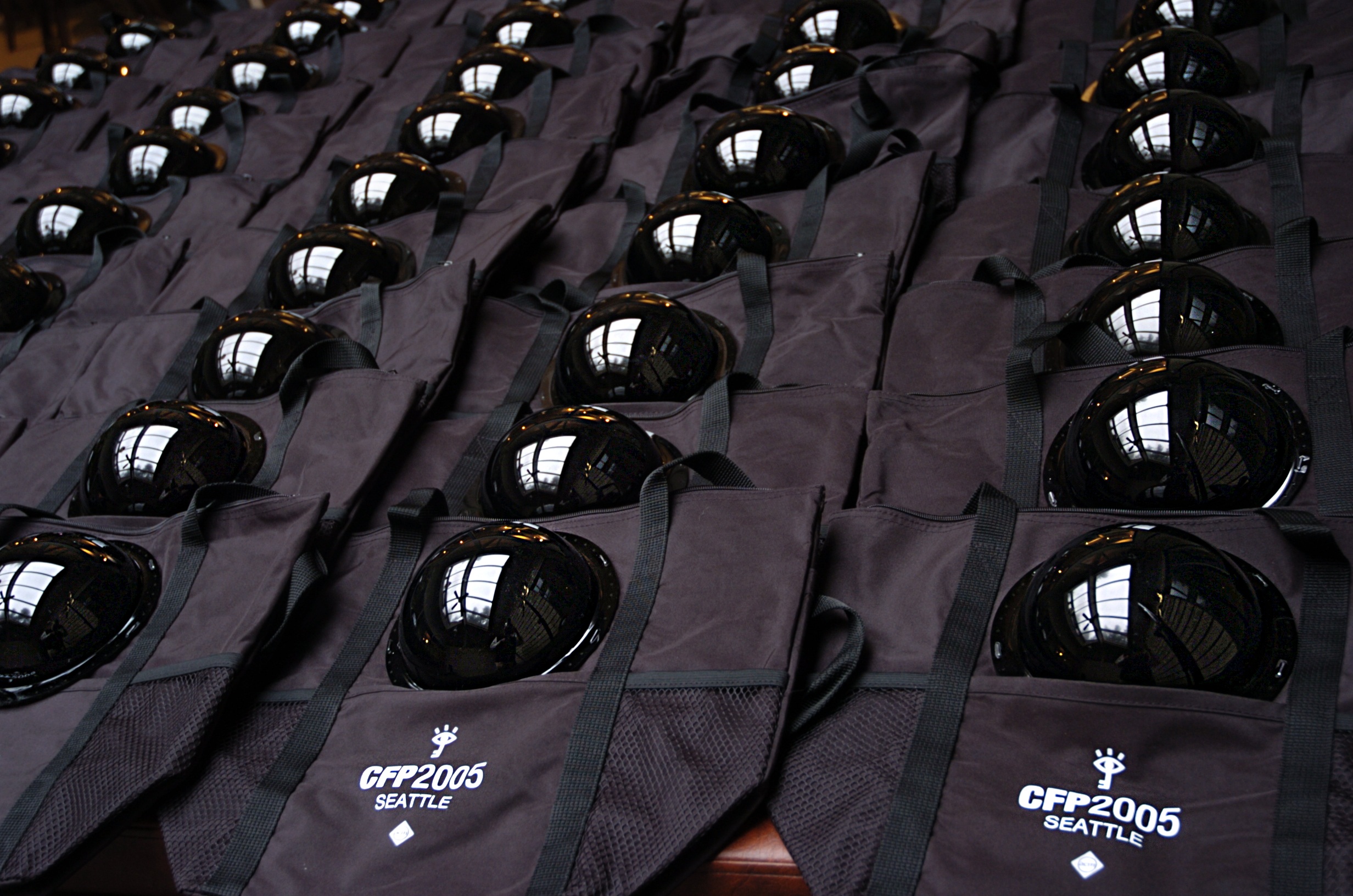 |
I am crazy of such kind of projects: dirt style design: "We are developing and researching design techniques inspired by the degraded aesthetic of the hobbyist, amateur and geek". It's actually one of the project conducted at Eyebeam. Dirt friendly people should DEFINiTELY have a look at the stunning "Manuel de la photo ratée" (Manuel of failed/bad pictures). |
Weird
Picturing the destruction of art
I found really intriguing the work of Dario Gamboni. This guy is a professor of Art History at the University of Amsterdam and he is working on the destruction of pieces of art. For instance, here is a description of one the project he was curator:
Picturing the destruction of pictures: Quite a few images represent people attacking images. They may be based on actual events witnessed by their authors but they always go beyond mere documentation. They include a reflection on what it means to damage or destroy a picture, a monument, a work of art, and they suggest reasons why this is done. Normally, they take sides for the objects under attack and condemn their assailants. This is not surprising, because the artists who created them were themselves involved in the production of images. But this condemnation can also express the point of view of the public at large, who has come to regard the intentional degradation of cultural property as a barbaric and irrational form of behaviour.
I may have to find Gamboni, D. (1997). The destruction of art: Iconoclasm and vandalism since the French Revolution. New Haven, CT: Yale University Press. 416 pages. ISBN 0-300-07170-1.
Why do I blog this?That's something very relevant lately, especially in Geneva where artists put cows in the stress and some folks threw them in the lake or hung them to a tree (whereas in Lyon, lions on the streets are put in hardly reachable places or behind a protection).
A dog that reconfigures itself into a couch
The Crystalline Atomic Unit Modular Self-reconfigurable Robot is a good project to apply the idea of modular robotics for adaptive furnitures. The simulated Crystalline robot can be transformed from a dog-like structure into a couch-like structure. The website presents simulation as well as possible implementations. Why do I blog this? we discussed this sort of things at the CAIF workshop two weeks ago and it seems that there is not lots of existing physical prototypes. Besides I find curious this "A manually planned simulation of a dog reconfiguring into a couch"
Why do I blog this? we discussed this sort of things at the CAIF workshop two weeks ago and it seems that there is not lots of existing physical prototypes. Besides I find curious this "A manually planned simulation of a dog reconfiguring into a couch"
How to behave in case of atomic attacks
This wonderful video explains the dangers of the atomic bomb, the effects of radiation and how to protect oneself if caught in the open or in the home. Of course, since it's from 1951 it's quite... hum...weird.


Generative art conference
generator.x is a conference and exhibition examining the current role of software and generative strategies in art and design.
Through a conference, an exhibition and this blog we will explore the following topics:Generative aesthetics: How can generative strategies be used to create dynamic systems with aesthetic parameters, whether to give new solutions to specific problems (computational design) or as an end in itself (generative art)?
Designing processes: A computational approach to design changes static objects into dynamic processes. What implications does this have for design and architecture, whether used for analysis, aesthetic expression or information visualization?
Performative software: Musicians and visual performers are using generative systems to create complex instruments for live performance, trying to overcome the convention of simply mimicking physical interface. How can a software instrument becomes as complex and expressive as a physical instrument that has been perfected over centuries?
Software by creatives for creatives: Artists and designers are increasingly creating their own software to meet special needs not covered by commercial packages, sharing their results as Open Source.


Micro-cameras to to get at the core interactions between user and tooth brushes
Just found this intriguing, found it in Industryweek from 1999:
Gillette uses miniature cameras to get at the core interactions between its products and their users.While Gillette Co., Boston, is actively observing and videotaping men and women shaving and brushing teeth, it also uses microcameras to observe the interaction of brush and tooth, blade and whisker.
In the development of the premium-priced Oral B Cross Action toothbrush, for instance, a miniature high-speed video camera was placed inside a model of a mouth that included one transparent tooth. Examining some 50 prototypes of bristle design, Gillette videotaped the action of the bristles through the clear tooth as the brush moved across the teeth. This showed that cleaning took place most effectively when the bristles changed direction as the brush moved across the teeth and that angling the bristles in a crisscross fashion increased this effect. That led to the design just now being marketed at premium prices.
I was not aware of such "In-Mouth Ethnography".
Grape racing
Thanks to Mauro, I am a lot into grape racing lately: here is how it works (taken from here:
What you need is a microwave oven, some grapes, a small measure of sunflower oil and some friends with which to compete.The idea is thus. Firstly, if the microwave is of the type that has one of those silly rotating dish-like things, which rotates your food to make sure it gets cooked evenly, then take it out and throw it away. You won't need it for this game and, if you get addicted enough, you probably won't use your microwave for anything else, so you won't need that dish thing ever again. OK, next, lightly cover the floor of the oven with a small amount of sunflower oil. Just generally spread it about, to make a thin, lubricating layer, on which a grape may skate about. Try it with a practice grape to make sure you've got it right. Then, line up a number of grapes at one side of the oven, with one grape corresponding to each player. Important tip here--make sure that the end with the hole in it is pointing at the wall. This is really quite fundementally important. Next, lay bets--or whatever--on your grape, that it will win/lose/finish in a particular position or state/ whatever. Then, set the microwave to full power, and switch on. What happens is that the inside of the grape heats up, liquifies, and acts as a jet propellant to push the grape along the lubricated floor of the microwave as it shoots out the hole at the back. Thus, each grape travels with varying degrees of speed and/or success across the floor. The first to reach the other side of the oven is judged to be the winner, or, failing this, the one to travel the furthest. Some grapes don't make it even this far, and either shrivel up or explode messily on the starting line, but this just adds to the fun. Remember to switch off the microwave and remove the competitors before replacing them for the next round.
The game can be varied according to players and their individual tastes, like ``Strip Grape Races'' for example, or ``Stunt Grapes'' where the grape must perform a task like jumping over other grapes, etc. These, and other variations, should keep you and your friends amused for hours.
A video can be found here:

Scientists create zombie dogs
(via), scientists have created eerie zombie dogs, reanimating the canines after several hours of clinical death in attempts to develop suspended animation for humans.
 |
Pittsburgh's Safar Centre for Resuscitation Research has developed a technique in which subject's veins are drained of blood and filled with an ice-cold salt solution. The animals are considered scientifically dead, as they stop breathing and have no heartbeat or brain activity. But three hours later, their blood is replaced and the zombie dogs are brought back to life with an electric shock. |
Sometimes... science is mad...
Conference bag include a "maybecamera"
(via ), at the Conference on Computers, Freedom and Privacy, the organizers turned every conference bag into a "maybecamera" replete with its individual dome.
 For people not aware of it, have a look here to know more about maybecamera... identityblog defines maybecamera as follows:
For people not aware of it, have a look here to know more about maybecamera... identityblog defines maybecamera as follows:
Steve [Mann of course -nicolas] has taken those little black domes that hide surveillance cameras intended to observe individuals, and used them to make personal surveillance systems that work in the opposite direction (through which the individual can record his treatment by organizations - see the photo at right for an example...) He ups the "anti" by calling them "maybecameras" - maybe they are real, maybe they are on, maybe they are recording, maybe they are broadcasting (he has developed sophisticated mechanisms for broadcasting video images in real time, and assembling them at a base station into wrap-around visual representations which can even be manipulated to edit out unpleasant sights like billboards). Of course, the maybecameras are really a "situationist" intervention, through which everyone starts thinking about many privacy issues.
An escape-pod to survive fire in tall buidling
The Economist has this week a strange piece about a russian invention that aim at surviving fire in high-rises.
a new way of clocking up air miles was to be found. It looks like a small, orange, inflatable swimming pool with a pointy underside. And strapped inside it is a Biggles-like doll complete with goggles, moustache and flying scarf. It is an escape-pod for people trapped in tall, burning buildings. And it is the product of the Lavochkin Association, an aerospace firm based in Khimki, near Moscow. (...) There is, at the moment, no convenient way to leave a tall building if the emergency staircases are on fire and the fire brigade has not arrived or its ladders will not reach. Nor are conventional parachutes an answer. As is well known to participants in the sport of Base Jumping (a mind-bogglingly dangerous activity that involves parachuting from static objects), parachutes have problems when launched from tall buildings. For a start, they may not have time to open properly. Even if they do, they can get snagged on the way down. And on top of that, if a building is burning they are liable to catch fire. Hence the Lavochkin escape pod—or “rescue system”, as the firm prefers to call it.

"Fourth places" concept
One of the good point of workshop and their informal discussion is that blurry and odd concepts emerges. That's what happened in a discussion with Fabien (software designer), Jeffrey (architecture professor), Scott (interactive display designer) and I (HCI researcher) with the very idea of bathroom places. We were arguing whether or not restrooms/bathrooms/toilets should be considered as "Third places". Then we decided that bathroom deserved a proper term: "Fourth Place" is then more adequate. Nevertheless urinals for instance, as 3rd places, affords social context and then (un-)relevant chat, discussion and intriguing social situations.
Toilet Paper Vending Machine
WOW....... a toilet paper vending machine, located ion the streets in case of...., found here:
This machine at a Tokyo subway station toilet will cost you 100 yen (about 80 cents US) for a small package of toilet paper.

Best practices for animal handling and stunning
Totally NON POLITICALLY CORRECT POST: I've just discovered the work of Temple Grandin.There is for instance this document: Best practices for animal handling and stunning by Dr. Temple Grandin, Meat & Poultry, April 2000, pg. 76. Temple is focused on studying animal behavior and designing various devices for them, as well as... killing them properly.
During visits to 42 beef and pork plants a number of best practices were identified, which were shared with the attendees. Animal handling and stunning greatly improved in 1999 compared to my 1996 U.S. Dept. of Agriculture audit. Following is a list of best practices that will improve animal welfare and help reduce pale, soft, exudative meat; bruises; dark cutters; and blood splash: - Plastic bags work well for moving cattle. A plastic wastebasket liner on a stick works well for turning cattle in the crowd pen. Use the stiff plastic liners that make a crackling noise. - If animals balk at a reflection on the floor of a chute, try moving the ceiling lights off the centerline of the chute. Moving a light will often eliminate a reflection. - People should stop whistling and yelling. High-pitched sounds from people yelling agitates the animals. - Eliminate the injection of air into the brain by a stunner.
I have to admit it's kind of horrible...
A single-wheeled , ride-inside conveyance vehicle
(via), Wheelsurf is a curious new vehicle: Bicycle commuter also presents this interesting single-wheel bicycle:
Bicycle commuter also presents this interesting single-wheel bicycle:
 Somehow more interesting is this singlewheel-trailer collection.
Somehow more interesting is this singlewheel-trailer collection.
Remote control important effect: arguments
(via), an unexpected side-effect of using remote-controls:Remote Controls Cause 1.5m Arguments A Day
A poll of 2,000 adults found 45 per cent get upset when someone loses the zapper — and messing about with the volume angers 34 per cent.
The biggest crime is switching channels without asking — annoying 77 per cent.
Nine per cent have come to blows over the remote and three per cent used it to hit someone.
A quarter admitted hiding the control from “rivals”.
Fruit and Vegetables Grown Under Office Building
Underground Urban farm: Fruit and Vegetables Grown Under Office Building:
 |
An underground rice and vegetable field has been planted beneath an office building in Tokyo's Otemachi business district. This urban farm - in what used to be the vault of a major bank - is maintained using computer-controlled artificial light and temperature management. It was brought into being by a personnel company as a means of providing agricultural training to young people who are having trouble finding employment and middle-aged people in search of a second career. |
I already blogged about it but this time we have a picture!
Improbable European Space Agency Advanced Concepts Generator
 |
Browsing the European Space Agency portal (very rich content!), I stumbled across this odd The Advanced Concepts Generator (ACG): |
There are and there will always be loads of crackpots ideas around. Sometimes they are confused with advanced concepts. In order to help spotting some of them and to enhance the creativity of new ideas the following Advanced Concepts generator might be useful. Press on the button below to generate an advanced concept that will appear on the text area above it. (...) If you find this tool useful please contact us. The ACT retains the copyright on all the ideas generated by the Advanced Concepts Generator (ACG).
The Advanced Concepts Generator was created by Dario Izzo and Cristina de Negueruela based on an open source script.
Why do I blog this? gosh, I find it funny of course but then I wondered about what this could be used/meant for? This kind of tool is very simply based on matching different list of words already stored into file/database. Is the point to see what connections can emerge? Is that the way the work at ESA? like creating this kind of buzzwords and then brainstorming about them? See what I did:
- Non-isotropic geothermal mechatronics
- Anomalous Monte Carlo based formation-flying [I am crazy of this one!]
- Multilegged regenerative propulsion [This one offers intriguing perspectives for spaceshipt, but it's OK for robots]
- Neuro-muscular fly-by tracking
- Coordinated Nambu-Goto architecture
- Low-cost relativistic solar blanket [is this a name for a couch?]
- ...
What is also strange is that sometimes de name of the designers (like "Izzo" and "de Negueruela" appears in the buzzwords).
Sigmund Freud Action Figure
In cannot believe this: Available here for $8.95.
Available here for $8.95.
Artifical larynx from 1929
This artificial larynx has been invented in 1929 at AT&T labs (picture found here):
Shoe-surface interaction
Well I cannot resist to show this machine used to study shoe-surface interactions (found here):
